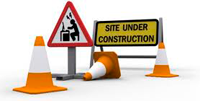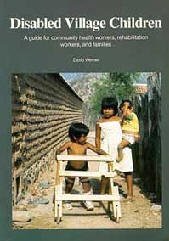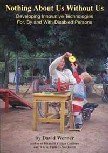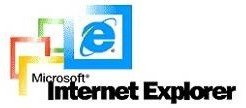PART 1. WORKING WITH THE CHILD AND FAMILY:
Information on Different Disabilities
|
page # |
A. Where Do We Start?
|
001 |
|
Chapter 1. |
Introduction to PART 1:
Making Therapy Functional and Fun |
003 |
|
Chapter 2. |
Ideas for Sharing Information from This
Book |
009 |
|
Chapter 3.
|
Prevention of Disabilities |
013 |
|
Chapter 4.
|
Examining and Evaluating the Disabled
Child |
021 |
|
Chapter 5.
|
Simple Ways to Measure and Record a
Child's Progress |
043 |
B. Recognizing, Helping with, and Preventing Common
Disabilities
|
|
| Chapter 6.
|
Guide For Identifying Disabilities |
051 |
| Chapter 7.
|
Polio |
059 |
| Chapter 8.
|
Contractures: Limbs That No Longer
Straighten |
077 |
| Chapter 9.
|
Cerebral Palsy (difficulty with
movements because of brain damage) |
087 |
| Chapter 10.
|
Muscular Dystrophy: Gradual, Progressive
Muscle Loss |
109 |
| Chapter 11.
|
Club Feet, Flat Feet, Bow Legs, and
Knock-knees |
113 |
| Chapter 12.
|
Common Birth Defects (cleft lip, extra
or joined fingers, incomplete l and arthrogryposis) |
119 |
| Chapter 13.
|
Children Who Stay Small or Have Weak
Bones (includes Rickets, Brittle Bone Disease, and
Dwarfism) |
125 |
| Chapter 14.
|
Erb's Palsy: Arm Paralysis from Birth
Injury |
127 |
| Chapter 15.
|
Painful Joints (includes How to Use
Aspirin) |
129 |
| Chapter 16.
|
Juvenile Arthritis |
135 |
| Chapter 17.
|
Rheumatic Fever |
153 |
| Chapter 18.
|
Hip Problems |
155 |
| Chapter 19.
|
Bone Infections |
159 |
| Chapter 20.
|
Spinal Curve and Other Back Deformities |
161 |
| Chapter 21.
|
Tuberculosis of the Backbone - Pott's
Disease |
165 |
| Chapter 22.
|
Spina Bifida (babies born with a defect
over their backbone) |
167 |
| Chapter 23.
|
Spinal Cord Injury |
175 |
| Chapter 24.
|
Pressure Sores |
195 |
| Chapter 25.
|
Urine and Bowel Management: With Spinal
Cord Injury and Spina Bifida (includes Urinary
Infections) |
203 |
| Chapter 26.
|
Leprosy |
215 |
| Chapter 27.
|
Amputations |
227 |
| Chapter 28.
|
Burns and Burn Deformities |
231 |
| Chapter 29.
|
Fits: Epilepsy |
233 |
| Chapter 30.
|
Blindness and Difficulty Seeing |
243 |
| Chapter 31.
|
Deafness and Communication |
257 |
| Chapter 32.
|
Mental Retardation: Down Syndrome,
Cretinism, and Other Causes |
277 |
| Chapter 33.
|
The Child with Several Severe
Disabilities |
283 |
C. Helping the Child Whose Mind and/or Body are Slow to
Develop
|
|
| Chapter 34. |
Child Development and Developmental
Delay |
287 |
| Chapter 35. |
Early Stimulation and Development
Activities |
301 |
| |
1) Head Control
and Use of Senses |
5) Creeping and
Crawling |
|
| |
2) Rolling and
Twisting |
6) Standing,
Walking, and Balance |
|
| |
3) Gripping,
Reaching, and Hand-eye Coordination |
7) Communication
and Speech |
|
| |
4) Body Control,
Sitting, and Balance |
8) Early Play
Activities and Toys |
|
D. Helping Children Develop and Become More Self-reliant
|
|
| Chapter 36.
|
Feeding |
319 |
| Chapter 37.
|
Dressing |
333 |
| Chapter 38.
|
Toilet Training |
337 |
| Chapter 39.
|
Bathing (includes Care of the Teeth and
Gums) |
345 |
| Chapter 40.
|
Ways to Improve Learning and Behavior |
349 |
| Chapter 41.
|
'Learning Disabilities' in Children with
Normal Intelligence |
365 |
E. Exercises and Techniques
|
|
| Chapter 42.
|
Range-of-motion and Other Exercises |
367 |
| Chapter 43. |
Crutch Use, Cane Use, and Wheelchair
Transfers |
393 |
PART 2. WORKING WITH THE COMMUNITY:
Village Involvement in the Rehabilitation, Social
Integration, and Rights of Disabled Children.
|
|
| Chapter 44. |
Introduction to PART 2:
Disabled Children in the Community |
401 |
| Chapter 45.
|
Starting Village-based Rehabilitation
Activities |
405 |
| Chapter 46. |
Playgrounds for All Children |
415 |
| Chapter 47.
|
CHILD-to-child: Helping Teachers and
Children Understand Disabled Children |
427 |
| Chapter 48.
|
Popular Theater |
455 |
| Chapter 49.
|
A Children's Workshop for Making Toys |
463 |
| Chapter 50.
|
Organization, Management, and
Financing of a Village Rehabilitation Program |
477 |
| Chapter 51.
|
Adapting the Home and Community to the
Needs of the Disabled |
485 |
| Chapter 52.
|
Love, Sex, and Social Adjustment |
491 |
| Chapter 53. |
Education: At Home, at School, at Work |
497 |
| Chapter 54.
|
Work: Possibilities and Training |
503 |
| Chapter 55. |
Examples of Community-Directed
Programs |
515 |
PART 3. WORKING IN THE SHOP:
Rehabilitation Aids and Procedures
|
|
| Chapter 56. |
Introduction to PART 3:
Making Sure Aids and Procedures Do More Good than
Harm |
525 |
| Chapter 57.
|
A 'Shop for Making Aids' Run by
Disabled Villagers |
533 |
| Chapter 58.
|
Braces (Calipers) |
539 |
| Chapter 59.
|
Correcting Joint Contractures (with
casts or braces) |
559 |
| Chapter 60.
|
Correcting Club Feet (with tape or
plaster casts) |
565 |
| Chapter 61.
|
Homemade Casting Materials |
569 |
| Chapter 62.
|
Developmental Aids (for lying,
sitting, standing, balance, and communication) |
571 |
| Chapter 63.
|
Walking Aids (bars, crutches,
walkers, canes) |
579 |
| Chapter 64.
|
Decisions about Special Seats and
Wheelchairs |
589 |
| Chapter 65.
|
Adaptations for Wheelchairs and
Other Sitting Aids |
607 |
| Chapter 66.
|
Designs for 6 Basic Wheelchairs |
613 |
| Chapter 67.
|
Artificial Legs |
625 |
|
|
637 |
|
|
643 |
|
|
645 |
 This
online book is under construction! Some pages are incomplete.
This
online book is under construction! Some pages are incomplete.



